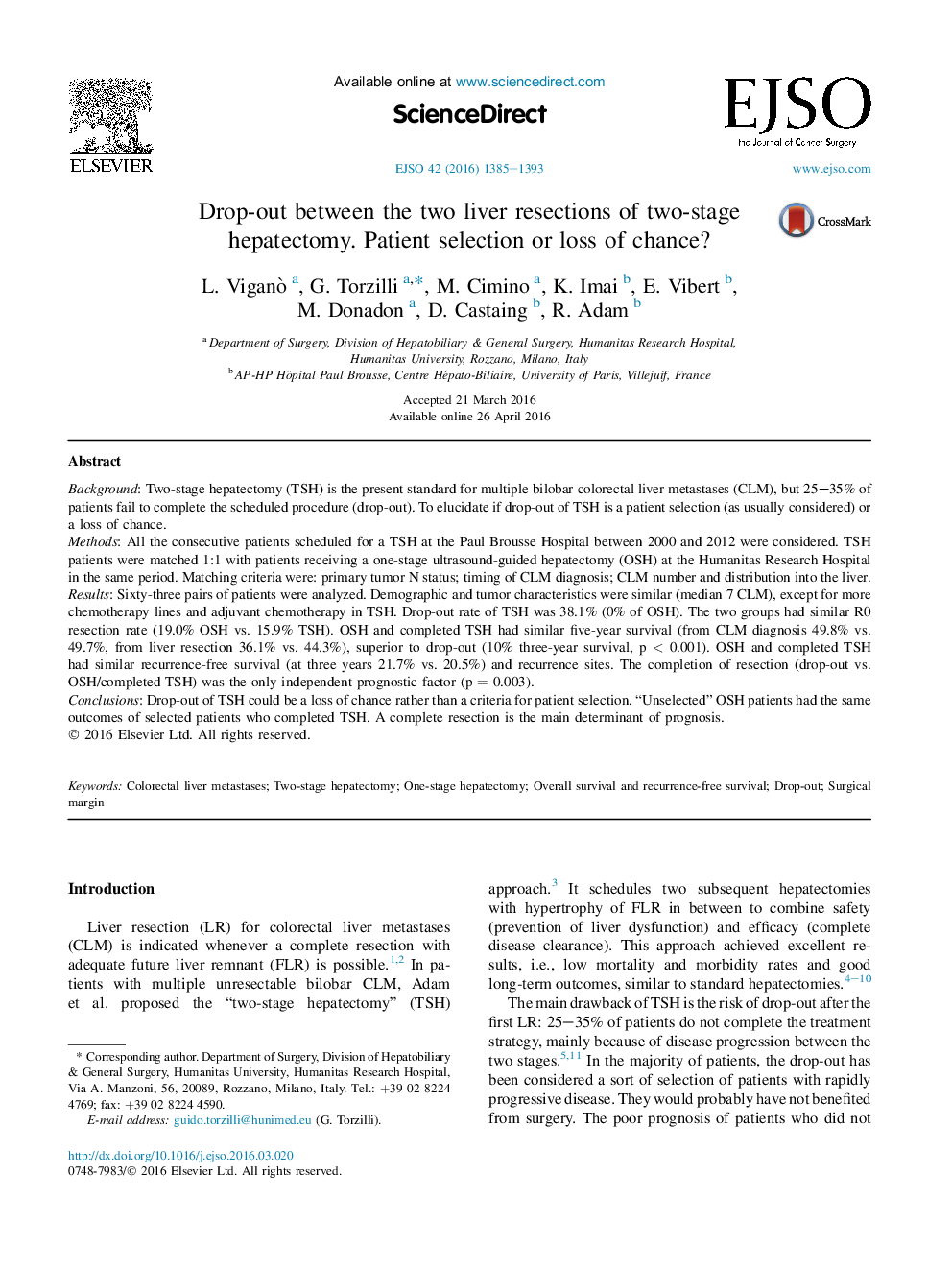| Article ID | Journal | Published Year | Pages | File Type |
|---|---|---|---|---|
| 3984445 | European Journal of Surgical Oncology (EJSO) | 2016 | 9 Pages |
BackgroundTwo-stage hepatectomy (TSH) is the present standard for multiple bilobar colorectal liver metastases (CLM), but 25–35% of patients fail to complete the scheduled procedure (drop-out). To elucidate if drop-out of TSH is a patient selection (as usually considered) or a loss of chance.MethodsAll the consecutive patients scheduled for a TSH at the Paul Brousse Hospital between 2000 and 2012 were considered. TSH patients were matched 1:1 with patients receiving a one-stage ultrasound-guided hepatectomy (OSH) at the Humanitas Research Hospital in the same period. Matching criteria were: primary tumor N status; timing of CLM diagnosis; CLM number and distribution into the liver.ResultsSixty-three pairs of patients were analyzed. Demographic and tumor characteristics were similar (median 7 CLM), except for more chemotherapy lines and adjuvant chemotherapy in TSH. Drop-out rate of TSH was 38.1% (0% of OSH). The two groups had similar R0 resection rate (19.0% OSH vs. 15.9% TSH). OSH and completed TSH had similar five-year survival (from CLM diagnosis 49.8% vs. 49.7%, from liver resection 36.1% vs. 44.3%), superior to drop-out (10% three-year survival, p < 0.001). OSH and completed TSH had similar recurrence-free survival (at three years 21.7% vs. 20.5%) and recurrence sites. The completion of resection (drop-out vs. OSH/completed TSH) was the only independent prognostic factor (p = 0.003).ConclusionsDrop-out of TSH could be a loss of chance rather than a criteria for patient selection. “Unselected” OSH patients had the same outcomes of selected patients who completed TSH. A complete resection is the main determinant of prognosis.
